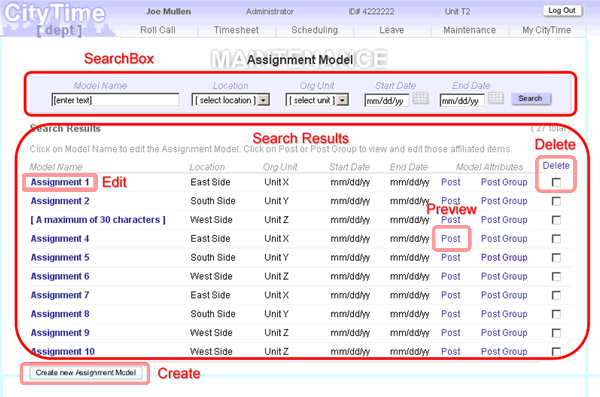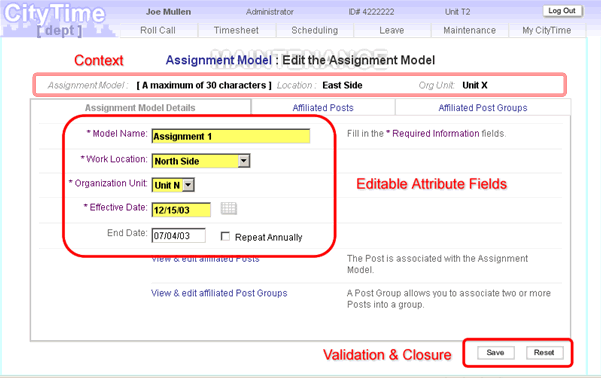Patterns
Capturing the common “interaction pattern” in a Behavioral Use Case ensures consistency across all applications and reduces redundant documentation.
The Use Case Guideline ensures that similar information is presented consistently and eases redundant documentation.
A visual interface is based on visual patterns.
The Best Practices“standards” document captures the bottom-line operational attributes of the system from a UI perspective. Much of this behavior can be described as “patterns” that recur again and again.
Behavioral Use Case Patterns
Here are some of the use case interaction patterns that we see regularly throughout our sites:
- Choose search criteria
- Run the search
- Display the results
- Select a record
Select from a List
Similar to Search, but without search tool
- Display the List
- Select a Record
Run a Report
- Choose report (Uses Search by Criteria)
- Choose parameters
- Set display/output format
- Run a report
- Display Results
- Fill in the blanks
- Save (check validation)
- Reset
- Cancel
System-generated Message
- Alert
- Notification
- Error
- Confirmation
By identifying and capturing the commonly recurring “patterns” we can reduce the workload, increase effectiveness and ensure consistency.
Such a Behavioral Use Case (BUC) is “global” in the sense that it is re-used throughout the site.
Laboriously redefining the Behavioral Use Case again and again is inefficient and inconsistent: the BUC should be defined as a unique Use Case. Once this has been done it can be easily referenced when appropriate.
Describe a commonly used pattern as a guideline by writing a use case for that particular workflow “pattern” of interaction. The Behavioral Use Case Guideline demonstrates the “best practices” for writing a use case for a similar pattern of interaction.
The use case guideline that describes a pattern of behavior should always
- use consistent terminology
- identify specific, relevant information
- describe process in a predictable order

